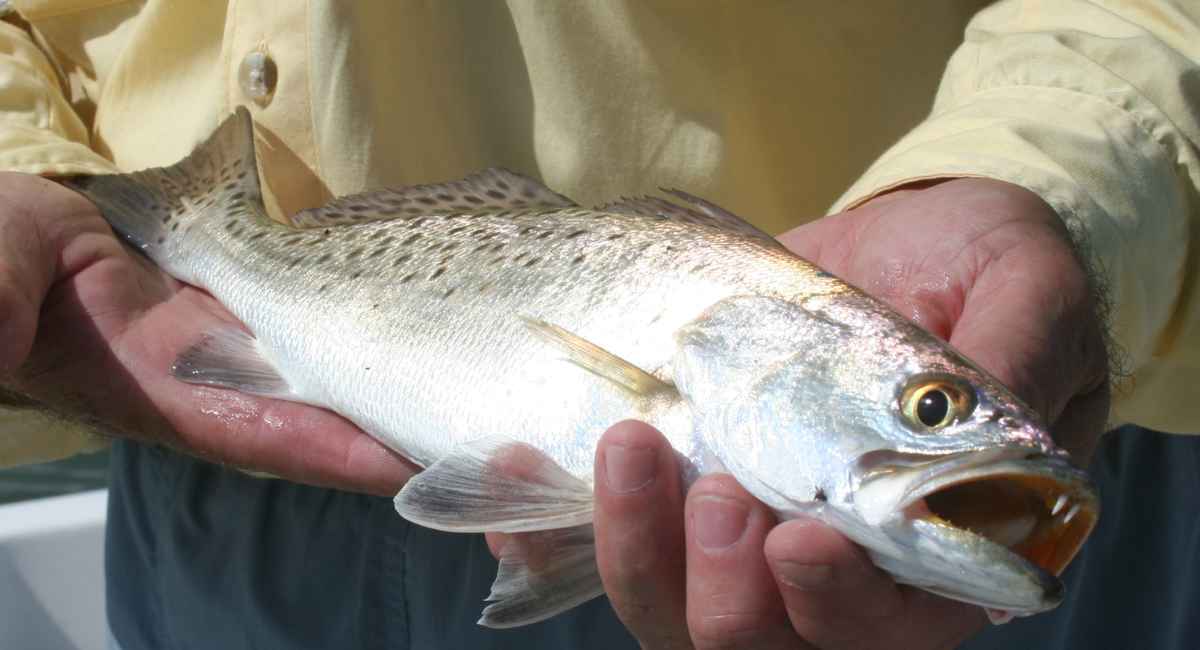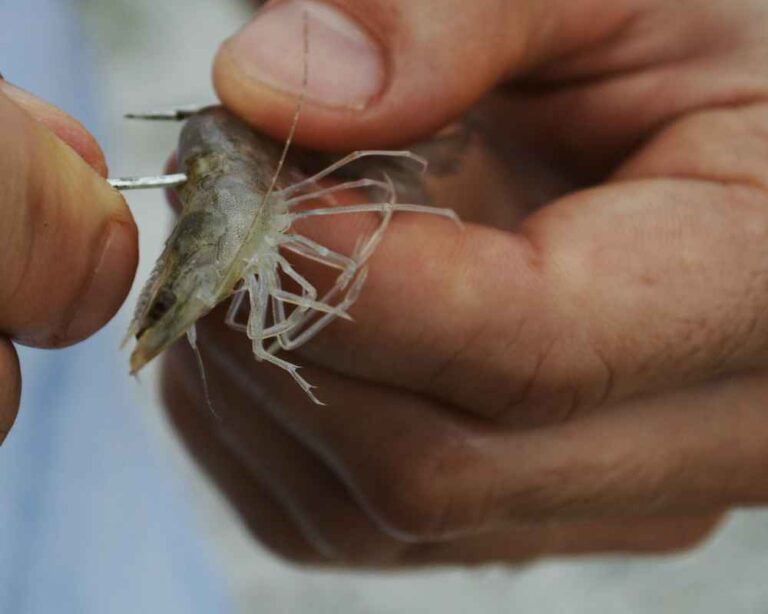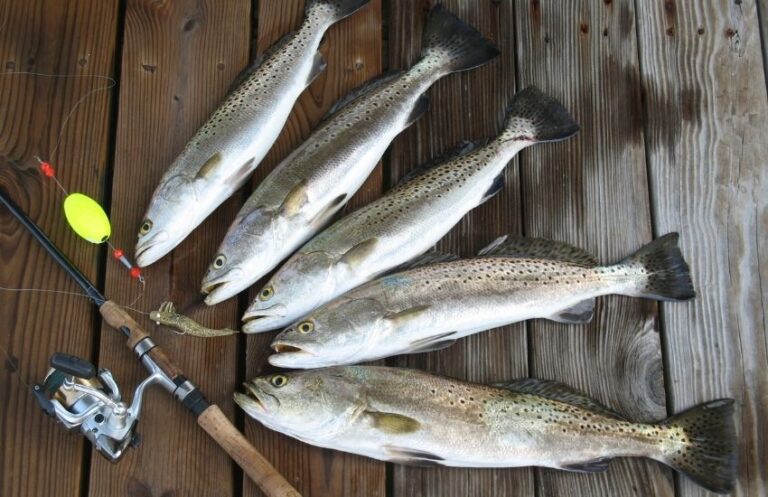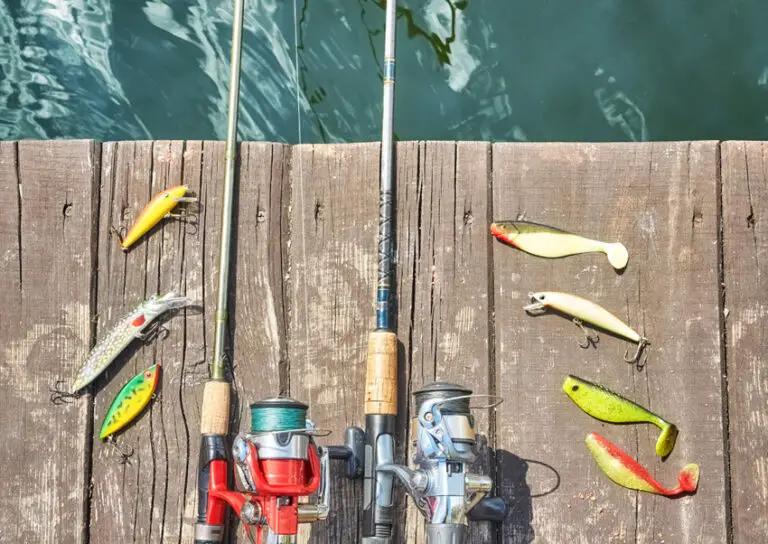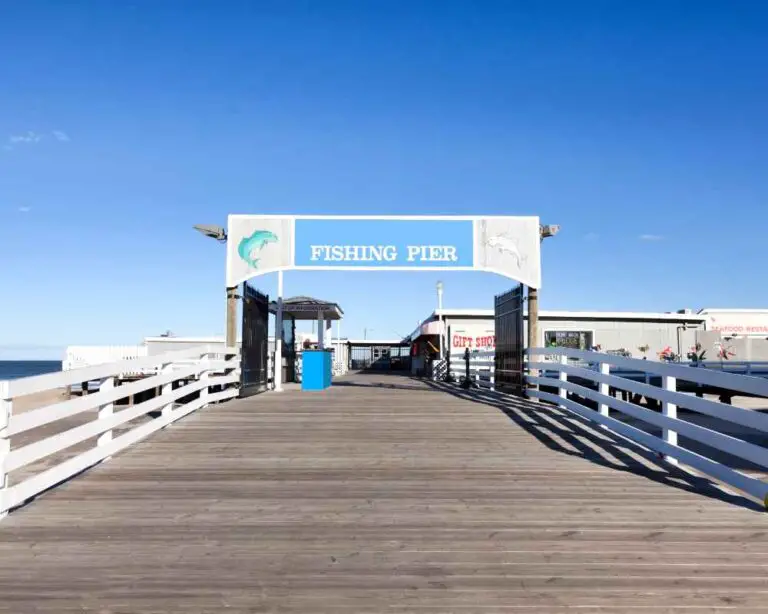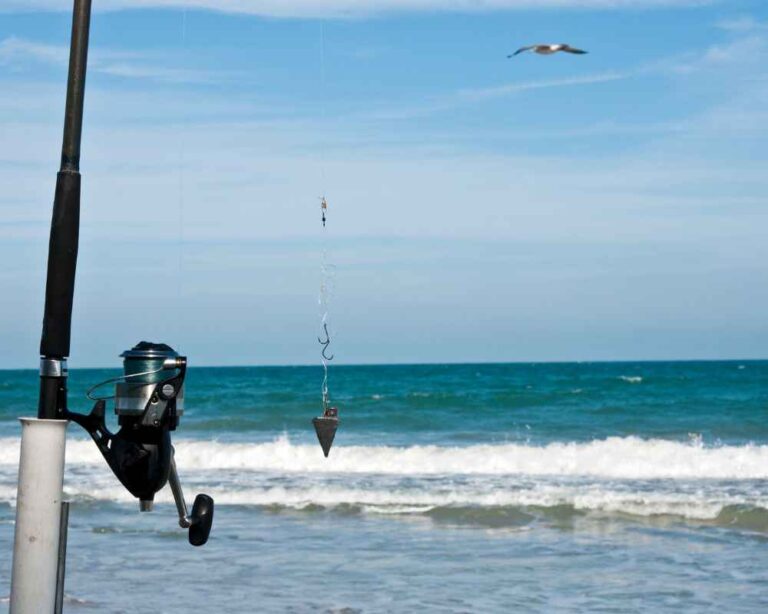Texas Saltwater Fish: A Guide to the Top Catches in the Lone Star State
Estimated reading time: 10 minutes
Honestly, I’m totally hooked on the wild and fun world of fishing on the Texas coast. I’ve put in so many hours on trips in the Gulf of Mexico, meeting cool Texas saltwater fish like redfish, spotted seatrout, southern flounder, and many more. My trips have shown me the beauty of Texas’s inshore waters and let me feel the excitement of gulf coast fishing and understanding the types of saltwater fish. Speaking of which, nothing beats the thrill of a good Texas bay fishing trip. All things considered, it’s an adventure I wouldn’t trade for anything.
As I’ve gained experience, I’ve also become well-versed in saltwater fishing regulations and the need for a valid Texas fishing license to protect the gulf coast’s game fish populations for future generations.
In this article, I will provide valuable insight into the different types of saltwater fish found in Texas waters, their unique characteristics, and their importance within the marine ecosystem. Whether you’re an avid angler, passionate about marine life, or just curious about the oceanic creatures that inhabit the Gulf of Mexico, I invite you to join me on this fascinating journey into the world of Texas saltwater fish.
Texas Coast Species
Along the Texas coast, there is a variety of saltwater game fish to catch. Some of the top species I target include red drum, speckled trout, flounder, kingfish, and black drum. The Texas coast offers a diverse range of habitats to fish, from shallow inshore flats and grass beds to deeper offshore structures like reefs and wrecks.
Here are some of the game fish species I usually find in Texas waters:
- Red drum
- Speckled trout
- Flounder
- Kingfish
- Black drum
- Snappers
- Groupers
Habitat and Conservation
As a responsible angler, I know that the health of the habitats that support these amazing saltwater game fish is crucial for their long-term survival. Coastal ecosystems such as seagrass beds, oyster reefs, and mangroves provide essential habitat for juvenile and adult game fish alike. Maintaining these habitats not only benefits the fish themselves but also creates a sustainable resource for recreational anglers like me to enjoy.
Conservation efforts, like catch and release practices and adhering to local fishing regulations, help ensure a healthy future for these game fish populations. Making sure I follow the proper size and catch limits on the Texas coast is an important step in Saltwater fishing conservation:
| Species | Size Limits | Catch Limits |
|---|---|---|
| Red drum | 20-28 inches | 3 per day |
| Speckled trout | 15-25 inches (1 over 25 inches allowed) | 5 per day |
| Flounder | 15 inches | 5 per day |
| Black drum | 14-30 inches | 5 per day |
By following these guidelines and practicing good stewardship, I can help preserve these saltwater game fish species for future generations to enjoy.
Specific Bait and Luring Techniques for Each
Amberjack
When targeting Amberjack, I’ve found live bait to be the most effective. Live baitfish like pinfish, blue runners, and cigar minnows work well when targeting this hard-fighting species. I’ve also had success using artificial lures, such as vertical jigs and large spoons. Working these lures near oil rigs or wrecks off the Texas coast can yield impressive results.
Black Drum
To catch a black drum, my go-to bait is crabs. I find that using small blue crabs or pieces of large crabs attract black drum effectively. Shrimp also can work well when targeting schools of smaller black drum in bays like Laguna Madre or around Corpus Christi.
Cobia
When it comes to Cobia, live bait is the way to go. I usually target them using live eels, pinfish, or mullet. I’ve also found success using artificial lures like bucktail jigs or large soft plastics, especially near structure, such as piers or rigs.
Flounder
Flounder are ambush predators, so I like to use live bait like finger mullet and shrimp as they mimic their natural prey. Gulp! soft plastics also work very effectively, especially when jigged along the bottom around structure or drop-offs.
Grouper
For Grouper, I prefer using live baitfish like pinfish or grunts, but cut bait such as squid or ladyfish can also work well. Vertical jigs and large artificial plugs can be effective too, especially when dropped near structure where grouper tend to hide.
King Mackerel
In my experience, King Mackerel are most attracted to live bait like blue runners, mullet, or ribbonfish, trolled or drifted behind the boat. Artificial lures like diving plugs, spoons, or skirted trolling lures can also work well, especially when targeting larger kings off the Texas coast.
Redfish
Redfish are one of my favorite saltwater species, and they love to feed on shrimp, crab, and small baitfish. In the Texas bays, I often use soft plastic lures like Gulp! or paddle tail swimbaits to entice them to bite. Live bait like mullet or shrimp also work well, especially when free-lined in shallow areas or under a popping cork.
Sheepshead
For Sheepshead, I’ve had the most success using live or fresh-dead shrimp, fiddler crabs, or barnacles. These bait types should be placed near structure like piers, jetties, or oyster beds, where sheepshead are known to hang out and feed on crustaceans.
Snook
Snook are highly sought after in Texas, and I love using live bait like mullet, pinfish, and shrimp to target them. Artificial lures like soft plastic jerk baits or paddle tail swimbaits can also entice snook to bite, especially when worked around mangroves, docks, or other structure.
Speckled Trout
To catch these popular gamefish, I prefer to use live shrimp or croakers under a popping cork. Soft plastics like Gulp! shrimp, paddle tail swimbaits, or topwater plugs can also be highly effective, especially in areas like the Laguna Madre or the bays near Corpus Christi.
Tarpon
Finally, for Tarpon, I like to use live mullet or pinfish, free-lined or under a float. Large swimbaits, jerk baits, or topwater plugs can also be very effective when targeting these silver giants. Tarpon are often found cruising along Texas beaches or near passes and inlets during the summer months.
Texas Saltwater Identification Resources
When it comes to identifying the diverse saltwater fish species found in Texas waters, having reliable resources is essential. Fortunately, there are several valuable tools available to help anglers and enthusiasts properly identify the fish they encounter.
From field guides to online resources, these identification references provide detailed information on the unique characteristics, habitats, and behaviors of Texas saltwater fish. By utilizing these resources, you can enhance your knowledge and make accurate identifications while exploring the rich marine ecosystem of the Lone Star State.
Here are some helpful Texas saltwater fish identification resources:
- “A Field Guide to Coastal Fishes: From Maine to Texas” by Val Kells and Kent Carpenter
- This comprehensive field guide features detailed illustrations and descriptions of various coastal fish species found in Texas and along the entire Eastern seaboard.
- Texas Parks and Wildlife Department – Saltwater Fish Identification
- The TPWD website provides a reliable online resource with an extensive database of saltwater fish species in Texas. It offers detailed species profiles, photographs, and information on identification features and habitat preferences.
- “Saltwater Fishes of Texas: A Guide to Inshore & Offshore Species” by C. Lavett Smith
- This book specifically focuses on the saltwater fish species found in Texas waters. It includes color photographs, descriptions, and distribution maps to aid in accurate identification.
- Texas Fishing Forum – Saltwater Fishing Identification
- The Texas Fishing Forum is a popular online community where anglers discuss fishing experiences and share knowledge. The forum has dedicated sections for saltwater fish identification, allowing members to post photos for identification assistance.
- Texas Saltwater Fishing Magazine – Fish Identification Section
- The magazine’s website includes a fish identification section featuring articles, photographs, and tips for identifying various saltwater fish species in Texas.
These resources can serve as valuable references for anglers, educators, and anyone interested in identifying the diverse saltwater fish species in Texas.
Where to Catch
Trip to Laguna Madre
I had an amazing time on my trip to Laguna Madre, where I encountered a variety of saltwater fish. Laguna Madre, nestled between the mainland and Padre Island, is one of the best locations in Texas for saltwater fishing. The habitat is perfect for species such as redfish, speckled trout, and black drum, which are abundant in the area.
During my visit, I also noticed some tripletail, a unique fish known for its three distinct fins. They typically hang around structures, like pilings and buoys. If you’re targeting tripletail specifically, make sure to use live bait, such as shrimp or mullet, and a medium to heavy action rod.
With the proper set-up and enough patience, you’ll likely enjoy successful catch rates in this prime fishing spot.
If you’re eager to discover the top 5 saltwater fishing spots in Texas, click here to watch the latest “Live at 5 Fishing” video and join us on an unforgettable angling adventure!
Corpus Christi Outings
Corpus Christi is another fantastic destination for saltwater fishing in Texas. On my outings there, I focused on targeting the inshore “Big Three”: redfish, flounder, and seatrout.
- Redfish often gather near oyster reefs and in the shallow marshes. I used soft plastics, swimbaits, and live shrimp under a popping cork to catch them.
- Flounder prefer sandy or muddy bottoms, and are known for their ambush-style hunting tactics. I found using a light jigging rig with soft plastics or live bait to be effective.
- Seatrout, on the other hand, can be found in grassy flats and drop-offs. Here, I used live shrimp or a popping cork and managed to reel in some nice-sized trout.
Corpus Christi also provides access to deeper waters, making it a prime location for various saltwater species, including tripletail when targeting their preferred habitat near floating structures.
Other Details
Regulations and Fines
When it comes to saltwater fishing regulations in Texas, Active At The Beach has you covered. I always make sure to follow the Texas guidelines and keep up-to-date on bag and size limits for different species to avoid any fines. I find the Texas Saltwater Fish Limits article to be a useful resource that I always keep with me when I’m out fishing.
Some of the popular species and their regulations include:
- Red Drum: 3 per day, 20-28 inches
- Black Drum: 5 per day, 14-30 inches
- Flounder: 5 per day, min 15 inches
- Sailfish: no limit, min 84 inches
- Red Snapper: limits vary depending on season, 15-inch minimum
You should always be aware of the regulations for each species when fishing to avoid fines and help preserve these amazing fish.
Seasonal Considerations
Since I enjoy saltwater fishing in Texas, I know that seasonal considerations also play a significant role in my success on the water. The TPWD is an excellent resource for information on seasons and specific events that may impact fishing opportunities. For example, the Red Snapper season is regulated and may vary each year, with specific dates for recreational and commercial fishing.
Be sure to stay informed about the current and upcoming seasons and adjust your plans accordingly. You never know what opportunities might present themselves in the ever-changing Texas saltwater fishing landscape.
Other Sources
- Texas Parks and Wildlife Department – Fishing Regulations: www.tpwd.texas.gov/fishboat/fish/
- Texas Saltwater Fishing Magazine: www.texassaltwaterfishingmagazine.com
- Texas Fishing Forum: www.texasfishingforum.com
- Texas Gulf Coast Fisherman Magazine: www.gulffishing.com
Conclusion
In conclusion, the world of Texas saltwater fish is truly captivating, and enjoy every time I go out on the coast. Hitting the Gulf of Mexico on fishing trips has allowed me to encounter incredible Texas saltwater fish like redfish, spotted seatrout, southern flounder, and many more.
Through these trips, I’ve gained a deeper appreciation for the beauty of Texas’s inshore waters and the thrill of Gulf coast fishing. The variety of saltwater fish species found in Texas’s coastal and bay areas is remarkable, offering endless opportunities for unforgettable angling adventures.
It’s crucial to respect and follow saltwater fishing regulations and possess a valid Texas fishing license to ensure the conservation of these precious resources for future generations. With a passion for marine life and a desire to explore the oceanic creatures of the Gulf of Mexico, I invite you to join me on this fascinating journey into the world of Texas saltwater fish.

